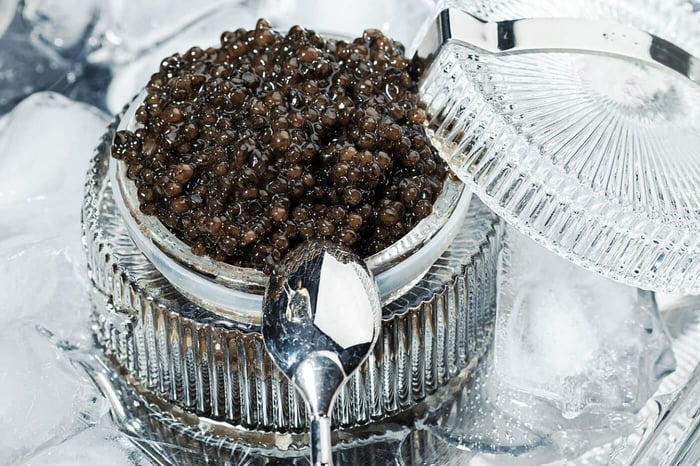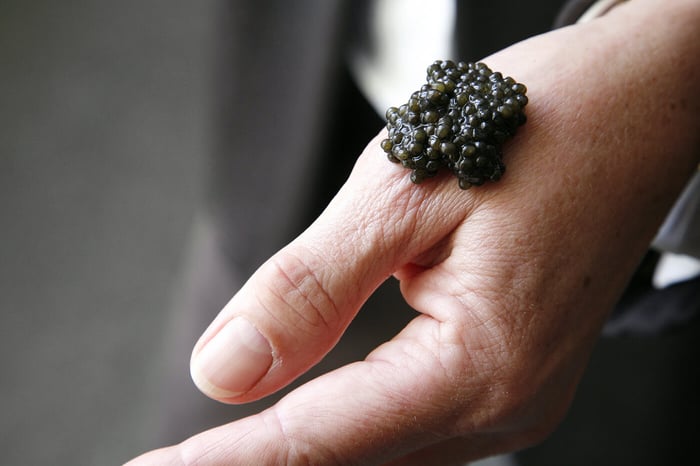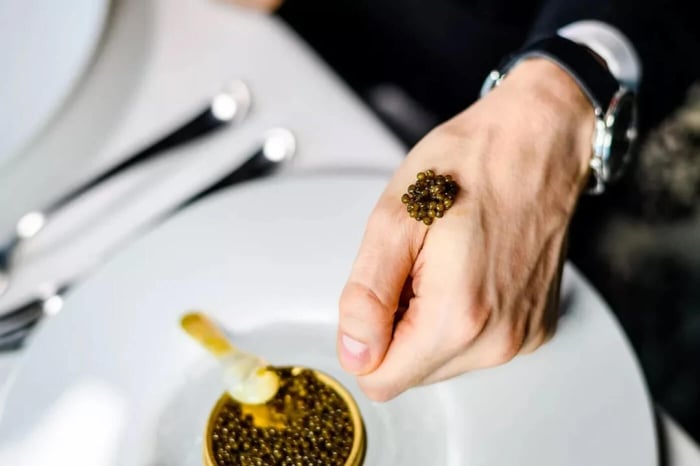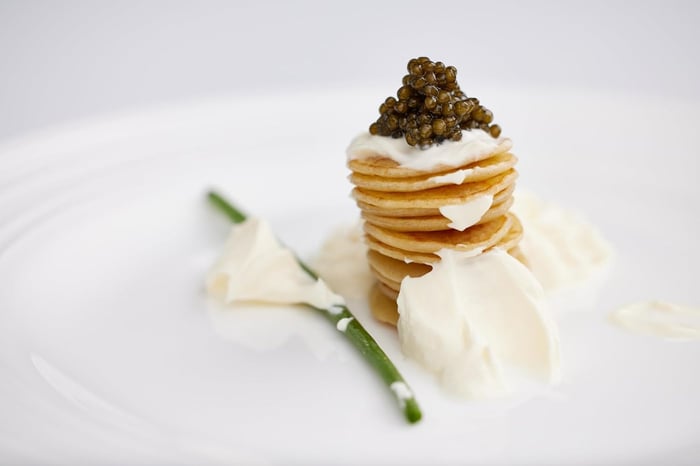 What Is Pasteurized Caviar? Pros and Cons for Consumers: Caviar, often called “black gold,” has long been a symbol of luxury and refinement. However, not all caviar is created equal, and the distinction between pasteurized and unpasteurized caviar is one that every consumer should understand. Pasteurized caviar has undergone a mild heat treatment to increase its shelf life and stability, making it safer and more accessible for global markets. Yet, this process also brings subtle changes to the taste, texture, and overall experience of the delicacy. Whether you’re a gourmet enthusiast or a curious first-timer, understanding pasteurized caviar’s unique characteristics, benefits, and drawbacks can help you make an informed choice when purchasing or serving this exquisite treat.
What Is Pasteurized Caviar? Pros and Cons for Consumers: Caviar, often called “black gold,” has long been a symbol of luxury and refinement. However, not all caviar is created equal, and the distinction between pasteurized and unpasteurized caviar is one that every consumer should understand. Pasteurized caviar has undergone a mild heat treatment to increase its shelf life and stability, making it safer and more accessible for global markets. Yet, this process also brings subtle changes to the taste, texture, and overall experience of the delicacy. Whether you’re a gourmet enthusiast or a curious first-timer, understanding pasteurized caviar’s unique characteristics, benefits, and drawbacks can help you make an informed choice when purchasing or serving this exquisite treat.
What Is Pasteurized Caviar?
Pasteurized caviar is fish roe that has been gently heated to around 60–70°C (140–158°F) for a short period to eliminate harmful bacteria and extend its shelf life. This controlled heating process is done without cooking the eggs, ensuring that the delicate structure of the caviar remains mostly intact. The eggs are then sealed in vacuum-packed tins or glass jars to maintain freshness and prevent contamination. Pasteurization makes caviar more stable for export and long-term storage, allowing it to be sold in countries with strict import regulations. Unlike fresh or “malossol” caviar, which must be kept refrigerated and consumed quickly, pasteurized caviar can last several months at room temperature before opening, making it a convenient option for both retailers and consumers.

Read: How to Pack and Ship Caviar for Long-Distance Travel
How Pasteurization Affects Caviar Quality
While pasteurization is primarily designed to make caviar safer, it also affects the product’s sensory qualities. Heating causes slight protein denaturation, which can change the texture of the eggs, making them firmer and less buttery than fresh caviar. The flavor profile may also be milder, as the process reduces some of the volatile aromatic compounds responsible for the rich, oceanic taste. Still, skilled producers carefully control the heat and time to minimize these changes, preserving as much natural character as possible. The best pasteurized caviar retains a satisfying pop and a nuanced flavor, particularly when sourced from premium sturgeon species like Beluga, Osetra, or Sevruga.
Pros of Pasteurized Caviar for Consumers
One of the biggest advantages of pasteurized caviar is its extended shelf life. Fresh caviar typically lasts only a few weeks under refrigeration, while pasteurized caviar can remain safe and flavorful for up to a year if unopened. This makes it ideal for consumers who enjoy caviar occasionally. Pasteurization also improves food safety, reducing the risk of bacteria like Listeria monocytogenes—a concern for pregnant women and those with weakened immune systems. Another benefit is cost-efficiency. Because pasteurized caviar is easier to store and ship, it’s often more affordable than fresh caviar. Its longer lifespan, accessibility, and safety make it a smart option for home use, gifting, or restaurants seeking consistency in quality and supply.

Read: The Science Behind Caviar’s Shelf Life
Cons of Pasteurized Caviar You Should Know
Despite its benefits, pasteurized caviar is not identical to fresh caviar in taste or texture. The mild heating process can make the eggs slightly less creamy and change their signature burst when eaten. Flavor-wise, pasteurized caviar tends to lose some of its natural complexity, resulting in a subtler profile. Moreover, once a jar of pasteurized caviar is opened, it must still be refrigerated and consumed within a few days—similar to fresh caviar. Some caviar purists also see pasteurized caviar as a compromise product, suitable for casual enjoyment but not ideal for high-end tastings or fine dining. If your goal is to experience the most authentic and luxurious caviar possible, unpasteurized “malossol” varieties remain the gold standard.

How to Identify and Serve Pasteurized Caviar
Identifying pasteurized caviar is simple—look for the label, as reputable brands clearly indicate pasteurization on packaging. It’s often sold in glass jars rather than traditional metal tins, allowing you to view the clarity and color of the eggs. Before serving, chill the jar for several hours; cold temperatures enhance both texture and taste. Always use non-metallic utensils—such as mother-of-pearl, bone, or wooden spoons—to preserve the delicate flavor. Pasteurized caviar pairs beautifully with blinis, toast points, or lightly buttered crackers, and can be enhanced with crème fraîche, diced shallots, or chilled Champagne. Even with its firmer texture, proper serving techniques can make pasteurized caviar an elegant and satisfying delicacy.
Pasteurized vs Fresh Caviar: Which Is Better?
Choosing between pasteurized and fresh caviar depends on your personal priorities. If you crave authenticity, buttery texture, and bold oceanic flavor, fresh caviar is unmatched. However, it’s perishable, expensive, and requires precise refrigeration. Pasteurized caviar, on the other hand, offers convenience, safety, and a longer shelf life, making it ideal for everyday enjoyment or gifting. Many modern producers have refined the pasteurization process to preserve much of the original taste, so the difference can be minimal when using premium-grade roe. For first-time buyers or casual consumers, pasteurized caviar provides an approachable and luxurious introduction to this celebrated delicacy.
Conclusion
Pasteurized caviar offers a balance of safety, convenience, and accessibility while still retaining much of the luxurious appeal that makes caviar so prized. Though it may lack some of the creamy richness and depth of flavor found in fresh caviar, it compensates with longevity and ease of storage. Whether you’re exploring gourmet foods for the first time or seeking a dependable option for entertaining, pasteurized caviar delivers a refined experience at a more approachable level. By understanding its production process, benefits, and trade-offs, consumers can make informed choices—and enjoy the elegance of caviar in a form that fits their lifestyle.
About the Author
 Igor Fishbeyn - Caviar Purveyor
Igor Fishbeyn - Caviar Purveyor
Igor Fishbeyn is purveyor of fine sturgeon caviar and creator of the Skazka Caviar brand. He is an expert with decades of experience specializing in importing, wholesaling, and retailing the finest quality caviar in the world. Igor frequently writes about caviar news and various topics about the caviar industry. He lives in San Francisco with his wife and daughter.
Shop Skazka Caviar
Browse Our Exclusive Caviar Collection
[dib_prod_5322279944351] [dib_prod_5322391584927] [dib_prod_5322633216159][dib_prod_5322609590431]
Shop Caviar By Type
Shop Black Caviar | Shop Red Caviar | Shop Caviar Accessories
Shop Beluga Caviar | Shop Kaluga Caviar | Shop White Sturgeon Caviar
Shop Osetra Caviar | Shop Salmon Roe | Shop Albino Sturgeon Caviar




